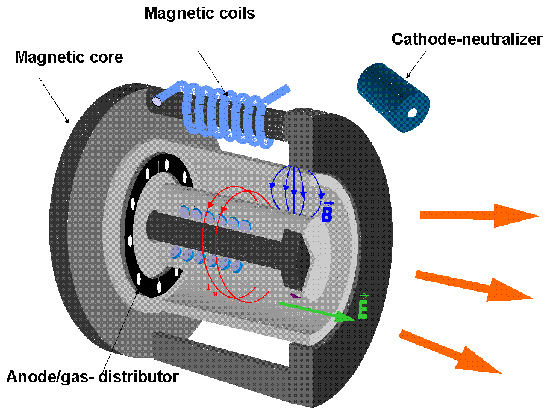Propulsion Systems
The engineering team selected a Hall effect thruster for use on the Deep Space 9 probe. Hall effect thrusters are a type of ion engine that have been employed in multiple satellite applications. They have been used for many years on Geosynchronous Earth Orbit (GEO) communications satellites for both orbital insertion and stationkeeping. The European Space Agency (ESA) demonstrated the first use of a Hall effect thruster outside of Earth orbit on the SMART-1 spacecraft in 2005, which used it to transfer orbits from the Earth to the Moon and then remain in lunar orbit.
The basic operation of a Hall thruster involves the creation of a radial magnetic field between outer and inner magnetic coils as shown in the diagram below. An electric field is set up axially and a gas is distributed in between the magnetic coils. Xenon gas is typically used because it has a high atomic mass and low ionization potential. The gas is ionized by collisions with rapidly moving electrons in the magnetic field, and the ions are accelerated by the electric field out the open end of the thruster. Below is a diagram of the hall thruster to be used

The Hall effect thruster selected for Deep Space 9 is a 5kW drive that was developed by the University of Michigan along with the United States Air Force Research Laboratory. The drive has comparable capabilities to drives that are available commercially. It has a specific impulse of 2326s that produces 246mN of thrust.
Sources:
This site is © Copyright YourName 2004-2005, All Rights Reserved
|

